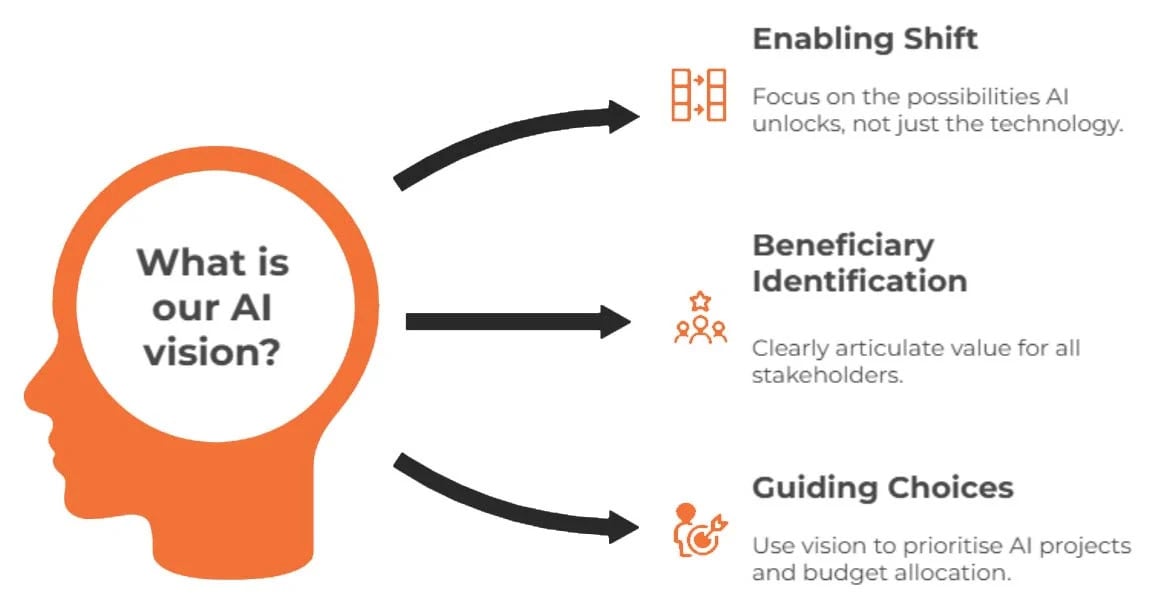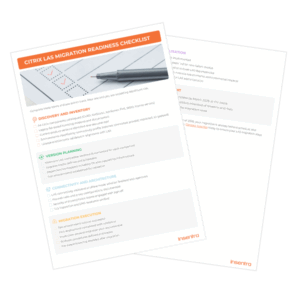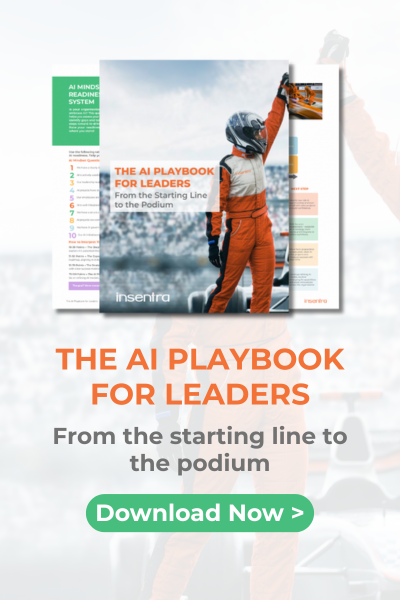Let’s start with an uncomfortable truth. Most organizations aren’t struggling with AI because they lack technology, data or even budget. They’re struggling because they’re building without a blueprint.
You’ve seen this pattern in your own organization. Someone in marketing discovers a new AI tool and starts experimenting. IT launches an AI pilot programme. Finance explores AI automation. Operations test a few AI use cases. Everyone is doing something with AI, yet nothing seems to connect. Six months later, you’ve got a portfolio of disconnected experiments, a growing cloud bill, and executives asking a simple question that nobody can answer “What are we actually getting from all this?”
This is the AI paradox of 2025. Adoption is everywhere, yet real transformation remains elusive. According to McKinsey’s latest research, whilst 88% of organizations now use AI in at least one function, only 39% report any meaningful impact on earnings.1 The gap isn’t widening between those who have AI and those who don’t. It’s widening between those who know what they’re building toward and those who are simply building.
The difference is vision.
What Vision Actually Means (And Why Most Get It Wrong)
When most leaders hear “AI vision,” they think of ambitious statements crafted in boardrooms. Something inspiring that goes on a slide deck. But that’s not vision. That’s marketing.
Real vision answers three fundamental questions that most organizations haven’t carefully considered:

What shift are we enabling? Not what technology we’re deploying, but what becomes possible that wasn’t before. Are you enabling your people to work at a higher level? Are you creating experiences that were previously impossible? Are you solving problems that currently consume too much human attention?
Who benefits and how? Your customers, certainly. But also, your team members, your partners, your shareholders. A genuine vision articulates the value creation clearly enough that people across your organization can see themselves in it.
What guides our choices? This is where vision becomes practical. When you’re deciding between ten AI projects, your vision tells you which three to pursue first. When you’re allocating budget, it tells you where investment compounds versus where it scatters.
Without clear answers to these questions, you’re not making strategic decisions. You’re making tactical guesses.
The Pattern Behind the Winners
Here’s what separates organizations capturing real value from AI versus those stuck in AI Inertia.
They don’t start with technology. They start with clarity about what they’re trying to change. BCG’s 2025 research shows that “future-built” companies (those architecting for AI from the ground up) are achieving 1.7 times the revenue growth and 3.6 times the shareholder returns of slower-moving competitors.2 The difference isn’t that they have better AI. It’s that they know what they’re building toward.
Consider the difference between two approaches to AI vision. Many organizations start with something like: “To use AI to improve efficiency and reduce costs.” That’s not a vision. That’s a vague aspiration that could mean anything.
Compare that to a professional services firm that articulates: “We will use AI to amplify our people’s expertise, enabling them to deliver deeper insights at a pace and scale previously impossible, while maintaining the trust and judgement our clients value.”
Notice what the second statement does. It tells you what to build (tools that amplify expertise, not replace it). It tells you what to measure (depth and pace of insights, not just efficiency). It tells you what constraints matter (maintaining trust and judgement). Suddenly, choosing between AI projects becomes straightforward. Does this amplify expertise or just automate tasks? Does it maintain trust or potentially undermine it?
That’s the power of actual vision. It converts endless possibilities into focused choices.
The Four Foundations Every AI Vision Needs
If you’re going to craft a vision that drives decisions rather than decorates presentations, you need four essential elements working together.
Foundation One
Reality-Based Capability Awareness
You need a grounded understanding of what AI can genuinely do today and what it’s likely to do soon. Not the hype. Not the fear. The reality.
This matters because the gap between perception and reality is enormous. Some leaders still think AI is years away from being useful. Others believe it can solve problems it demonstrably cannot. Your vision must be built on what’s possible, or you’ll either under-invest in genuine opportunities or over-commit to fantasy.
Start by auditing honestly. What AI capabilities do we already have What capabilities should we be planning for in the next 12-24 months? Where are our biggest gaps (technology, data, talent, governance)? What blockers exist today that will constrain what we can build?
Foundation Two
A Shared True North
This is your anchor point. It is not a vague slogan but a practical statement of purpose that shapes choices and sparks momentum. It must be defined clearly enough to influence real trade-offs while still leaving room for new ideas as AI capability matures.
Many companies are already using AI to lift human potential, expand access, and solve problems that were previously out of reach. Their strongest visions make it clear that AI is meant to enhance judgement, not replace it, and to distribute value across their communities rather than concentrate it. This points them toward responsible data use, transparent systems, and outcomes that improve the daily experience of customers and employees. It also steers them away from shortcuts that erode trust or create hidden risks.
Your vision needs this level of clarity. If your leadership team cannot explain it confidently, it lacks force. If people across your organization cannot link their work to it, it lacks relevance. A true north should help everyone understand not only what you aim to build with AI, but why it matters.
Foundation Three
Strategy That Connects Today to Tomorrow
Vision without execution is daydreaming. You need clear mechanisms that move you from current state to desired state.
This means defining the key outcomes you’re pursuing:
- Revenue growth or margin expansion?
- Customer experience transformation or operational excellence?
- Market position or defensive capability?
It means mapping which functions and processes AI will impact, then sequencing ruthlessly. Which initiatives are quick wins that build capability and credibility? Which are transformational bets that change your competitive position? Most organizations try to do everything simultaneously and end up doing nothing well.
It means establishing the enablers you’ll need (governance structures, data infrastructure, security frameworks) before you need them, not after projects stall because the foundations aren’t there.
Foundation Four
Responsible and Secure by Design
AI risks are real, immediate and increasingly visible. Bias. Security breaches. Loss of trust. Privacy violations. Organizations that treat these as afterthoughts pay enormous costs, both financial and reputational.
Your vision must embed responsibility from the start. This isn’t bureaucracy. It’s essential infrastructure that enables speed and confidence. When your team knows the guardrails, they can move faster, not slower. When your customers know you’ve thought about ethics and security, they’ll trust you with harder problems.
Define who is accountable for fairness, privacy and model governance. Establish your security sandbox and compliance framework. Make transparency about AI use a default, not an afterthought.
Why This Matters Right Now
The window for establishing AI advantage is open but narrowing. McKinsey’s research shows that nearly two-thirds of organizations haven’t begun scaling AI across the enterprise.1 They’re stuck experimenting whilst a smaller group of leaders are building competitive moats.
The divergence is accelerating. Agentic AI (systems that can reason, plan and execute complex workflows autonomously) already accounts for 17% of total AI value in 2025 and is expected to reach 29% by 2028, according to BCG.2 Future-built companies are allocating meaningful budget to agents whilst most organizations haven’t started.
At the same time, vibe coding platforms such as Cursor, Replit and Google AI Studio are growing at a rate of knots. They let anyone spin up agents and apps in minutes. That can unlock huge innovation, but without governance it quickly turns into shadow AI, with untracked code, fragile automations and security gaps proliferating across the organization.
The difference isn’t access to technology. It is clarity about what to build, why it matters for the business and how you will govern it so that AI moves out of AI inertia and into scaled, reliable value.
The Path Forward
If you’re a business leader reading this and recognising your organization in the “lots of experiments, little enterprise value” pattern, here’s what changes that:
This month
Convene your cross-functional leadership (technology, operations, risk, strategy) and ask three questions:
- If AI succeeded perfectly here, what would change for our customers?
- For our people?
- For our competitive position?
Draft a vision statement from those answers.
Test it. Is it memorable? Does it guide decisions? Does it align with your core mission?
This quarter
Select three outcome metrics that matter (not activity metrics like “number of AI projects,” but value metrics like “customer satisfaction improvement” or “decision cycle time reduction”). Work backwards from those outcomes to identify what capabilities you need. Establish a governed sandbox where teams can experiment safely and learn quickly.
Ongoing
Tie your AI vision into your broader transformation agenda. AI isn’t a separate initiative. It’s a lens through which you redesign how value gets created. The organizations that understand this are the ones pulling away from the pack.
From Strategy to Action
Understanding what’s possible with AI isn’t an academic exercise. It’s the essential foundation for building a vision that delivers value instead of generating PowerPoint presentations.
This is precisely why we designed the Insentra Generative AI Sprint Series. It’s not another AI overview or vendor pitch. It’s an intensive, practical session where we help your leadership team:
- Gain a clear picture of what generative AI can achieve today and in the near future supported by working demonstrations rather than theory
- Pinpoint your most valuable AI opportunities using our AI Pathfinder tailored to your organization and sector
- Learn how leading businesses are turning AI experiments into genuine competitive advantage
- Start shaping your AI vision with expert support grounded in both technical reality and business priorities
- Walk away with practical next steps you can put into action straight away
The organizations winning with AI aren’t the ones with the biggest AI teams or the most experiments running. They’re the ones with clarity about where they’re going and why. They started by understanding what’s possible, then built a vision that converts possibility into reality.
The question isn’t whether AI will transform your industry. It’s whether you’ll be leading that transformation or responding to it.
Ready to move from experiments to execution? Join us for Generative AI Sprint 1 and discover what AI can actually do for your organization. Secure your place and begin building an AI vision that delivers real value, not just interesting pilots.
Source
1 McKinsey & Company. (2025). “The State of AI 2025: Global Survey.”
2 Boston Consulting Group. (2025). “Future-Built Companies: AI Adoption and Business Performance.”











